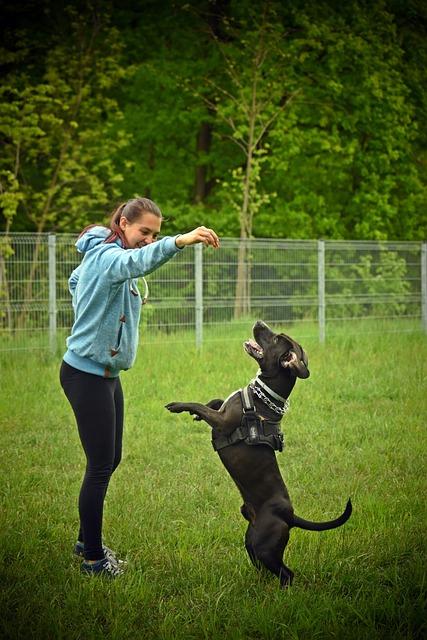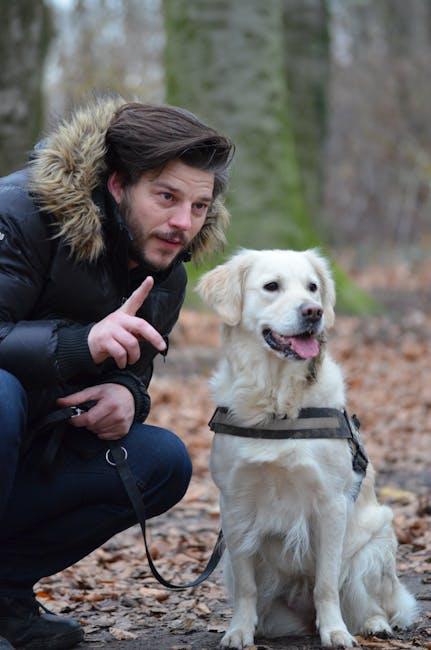How to Handle a Dog That Refuses to Listen

When faced with a dog that seems to ignore commands or appears unresponsive, it can be both perplexing and frustrating for pet owners. Understanding how to effectively handle a dog that refuses to listen is crucial not only for maintaining a harmonious household but also for ensuring the safety and well-being of your furry friend. This article aims to provide practical strategies and insights into addressing this common behavioral challenge. By exploring the reasons behind your dog’s lack of responsiveness and learning tailored techniques to improve communication, you can foster a more cooperative and rewarding relationship with your canine companion.
Understanding the Root Causes of Disobedience
Disobedience in dogs often stems from several underlying factors that, when understood, can be effectively addressed. One common cause is a lack of clear communication. Dogs thrive on consistent signals and commands, so inconsistencies can lead to confusion. Another factor is insufficient training. Without proper guidance, dogs may not comprehend what is expected of them. Additionally, boredom or lack of mental stimulation can result in disobedient behavior as dogs seek attention or engage in mischief to entertain themselves.
- Communication: Ensure commands are clear and consistent.
- Training: Regular sessions reinforce desired behaviors.
- Stimulation: Engage your dog with toys and interactive play.
It’s also essential to consider emotional factors, such as anxiety or fear, which can lead to non-compliance. A dog that is anxious might not respond to commands as expected. Past experiences or trauma can also play a significant role, especially in rescue dogs. Identifying these root causes can guide you in tailoring your approach to training and behavior correction, ensuring a more harmonious relationship with your furry friend.

Effective Communication Techniques with Your Dog
- Understand Your Dog’s Signals: Dogs communicate through body language, and being attentive to these signals can greatly improve your interaction. Look for cues such as tail wagging, ear position, and eye contact. Each of these gestures can tell you a lot about your dog’s mood and willingness to engage.
- Use Positive Reinforcement: Reward your dog for good behavior rather than punishing them for not listening. Treats, praise, and playtime are excellent motivators. Consistently reinforcing positive actions helps your dog associate listening with rewards, making them more inclined to follow commands.
- Keep Commands Clear and Consistent: Use simple, consistent commands and avoid changing words or tone. Dogs thrive on routine, so maintaining consistency in your language helps them understand what is expected. Repeat commands calmly and firmly until your dog learns to associate them with the desired action.
- Practice Patience and Persistence: Training takes time, and persistence is key. Dogs, like humans, need repetition to learn effectively. Be patient and practice regularly, ensuring that training sessions are short and enjoyable to keep your dog engaged.

Training Strategies to Encourage Better Behavior
Encouraging your dog to exhibit better behavior often starts with consistent and clear communication. Begin by establishing a routine that incorporates both mental and physical stimulation. This can help your dog understand what is expected and reduce instances of misbehavior. Incorporate commands that are straightforward and always use the same words to avoid confusion. For example, if you’re teaching your dog to sit, always use the command “sit” rather than varying it with phrases like “sit down” or “take a seat”.
- Positive Reinforcement: Reward your dog with treats, praise, or playtime whenever they follow a command correctly. This will help them associate good behavior with positive outcomes.
- Consistency is Key: Make sure that everyone in the household uses the same commands and follows the same training strategies to avoid mixed signals.
- Short, Engaging Sessions: Keep training sessions short but frequent to maintain your dog’s attention and enthusiasm.
- Patience and Persistence: Remember that training is a gradual process. Be patient and persistent, as it may take time for your dog to fully understand and adhere to the commands.
Implementing these strategies can transform your training sessions into a productive and enjoyable experience for both you and your dog, paving the way for a more harmonious relationship.

Consistency and Patience in Reinforcing Commands
Training a dog requires both consistency and patience to effectively reinforce commands. When a dog seems reluctant to listen, it’s essential to maintain a regular training schedule and stick to a set of clear, concise commands. Consistency is key; using the same words and gestures each time ensures that your dog understands what is expected. This uniformity helps to eliminate confusion, allowing your dog to learn more efficiently.
- Ensure commands are brief and clear.
- Practice regularly at different times of the day.
- Reward positive behavior immediately with treats or praise.
Patience plays a crucial role in training as well. It’s important to remember that learning takes time, and progress may be slow. Avoid expressing frustration, as this can create a negative association with training sessions. Instead, focus on celebrating small victories and gradually building upon them. If your dog is struggling, take a step back and revisit the basics, providing ample opportunities for your furry friend to succeed.
- Stay calm and composed during training sessions.
- Break tasks into smaller, manageable steps.
- Provide consistent feedback and encouragement.



